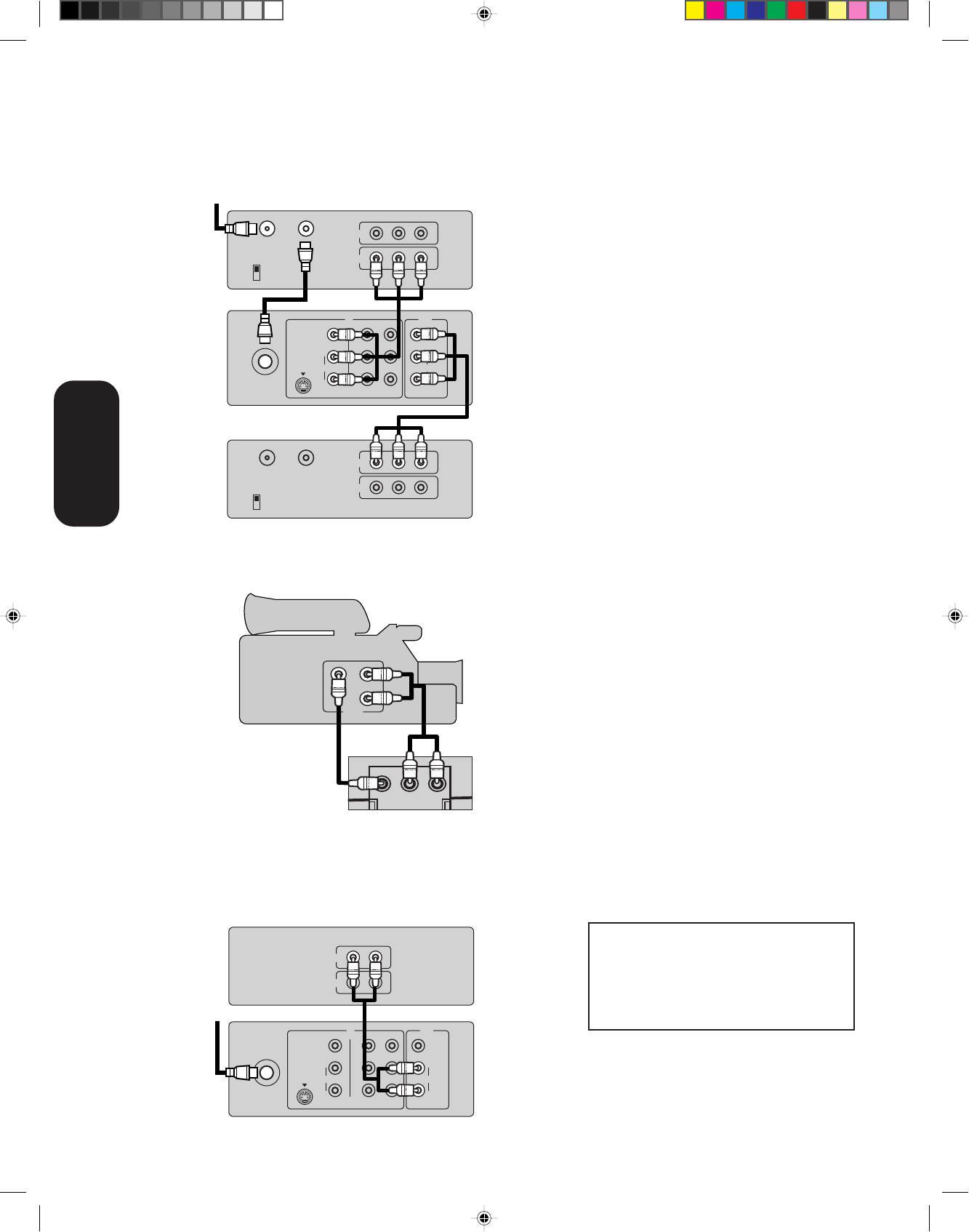
10
VIDEO
AUDIO
L
R
OUT
You will need:
• one coaxial cable
• two pairs of audio cables (two single audio
cables for mono VCRs)
• two video cables
Note:
Do not connect one VCR to the output and
input jacks on the TV at the same time. If you
are using an S-VHS VCR, use the S-video
connections and remove the video cable.
Connecting two VCRs
This connection allows you to record from one VCR to another VCR
while watching a video program. You will also be able to record from
one TV channel while watching another channel.
Connecting a camcorder
This connection allows you to watch video materials recorded on a
camcorder.
You will need:
• one pair of audio cables
• one video cable
Note:
If you are using an S-VHS camcorder with
S-video output, use the Video1 jacks on the
back of the TV.
Connecting
your TV
Connecting an audio amplifier
This connection allows you to use an audio amplifier to enjoy a high-
quality sound. This also allows you to use external speakers.
To control the audio, turn on the TV and the stereo amplifier.
IN
OUT
VIDEO
IN from ANT
CH 3
CH 4
OUT to TV
AUDIO
LR
IN
OUT
VIDEO
IN from ANT
CH 3
CH 4
OUT to TV
AUDIO
LR
VIDEO
Y
P
B
PR
AUDIO
L/MONO
R
VIDEO
IN OUT
ANT (75Ω)
VIDEO 1 VIDEO 2
AUDIO
S-VIDEO
L/MONO
R
Stereo VCR / Playback
TV
Stereo VCR/ Recording
IN
OUT
AUDIO
LR
VIDEO
Y
P
B
PR
AUDIO
L/MONO
R
VIDEO
IN OUT
ANT (75Ω)
VIDEO 1 VIDEO 2
AUDIO
S-VIDEO
L/MONO
R
To antenna
Camcorder
Front Panel of TV
Audio Amplifier
TV
To cable,
cable box
or antenna
You will need:
• one pair of audio cables
The unauthorized recording, use, distribu-
tion or revision of television programs,
videotapes, DVDs, and other materials is
prohibited under the Copyright Laws of the
United States and other countries, and may
subject you to civil and criminal liability.
3L52401B/E P07-14 4/6/2002, 14:2510


















